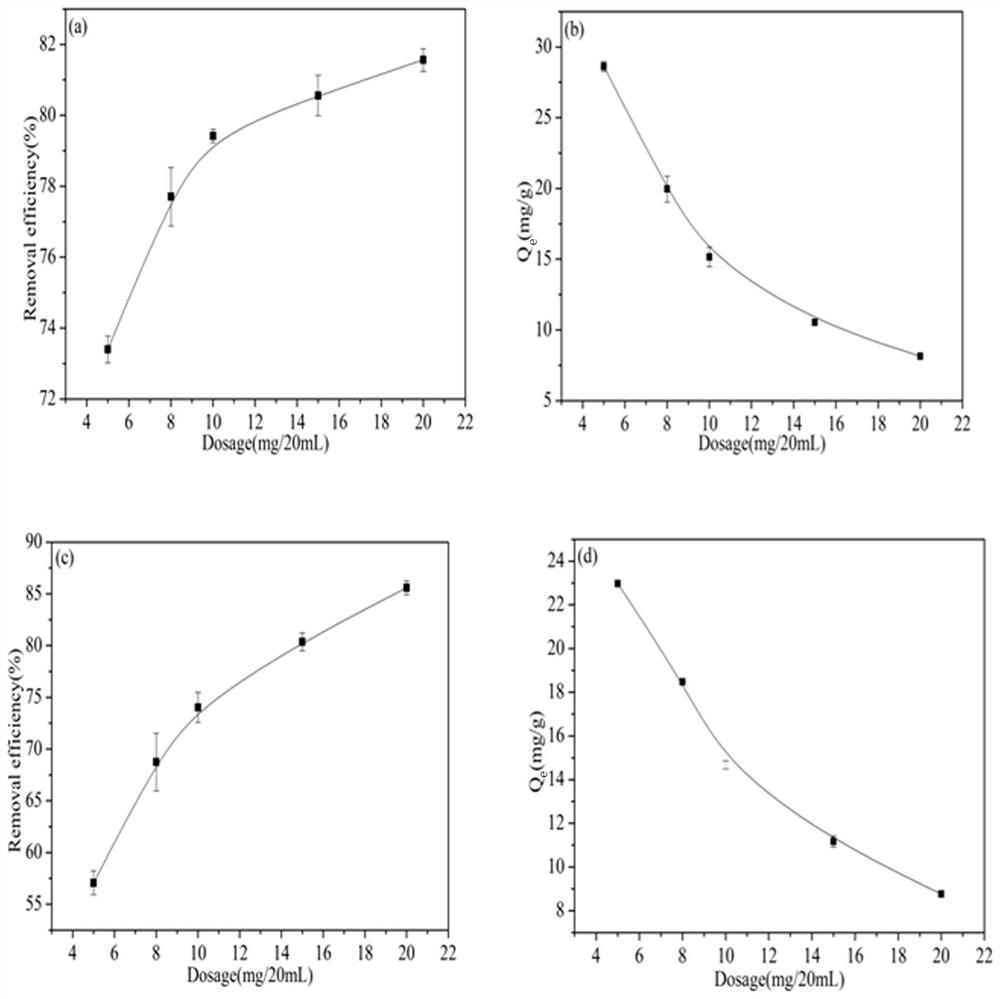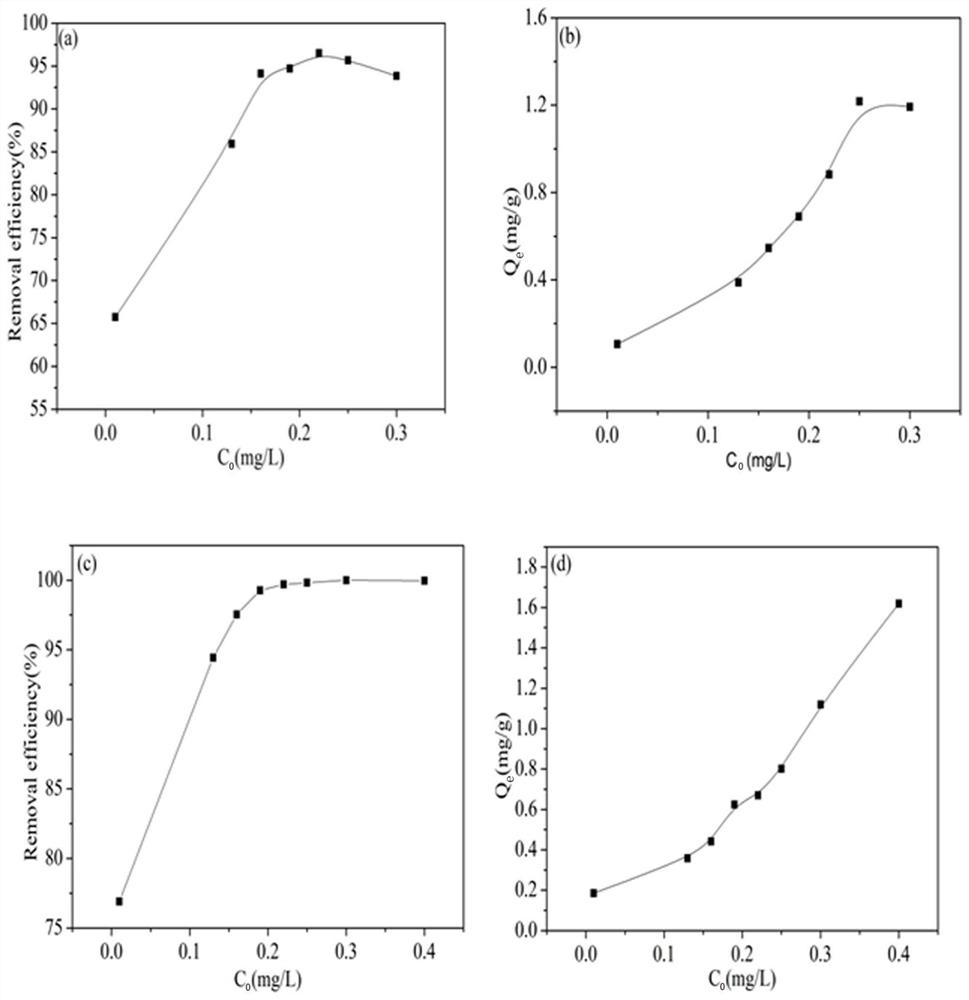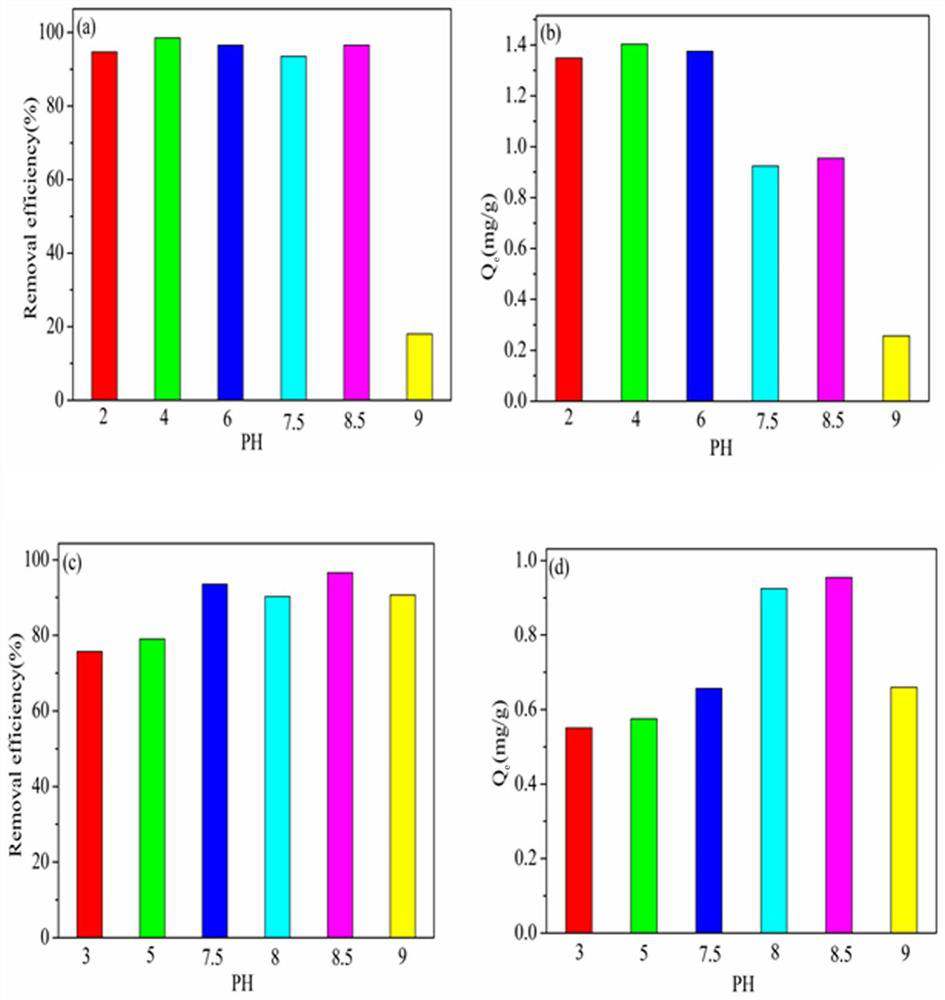Method for removing trace heavy metal mercury in honeysuckle flower extracting solution in situ
A technology of honeysuckle extract and trace heavy metals, which is applied in the field of traditional Chinese medicine processing and can solve problems such as little attention to hazards
- Summary
- Abstract
- Description
- Claims
- Application Information
AI Technical Summary
Problems solved by technology
Method used
Image
Examples
Embodiment 1
[0025] Example 1: Preparation of porous carbon material;
[0026] 1) Soft template method:
[0027] First melt 6.00g phenol, then mix 21.00mL formaldehyde solution (37%) and 90.00mL (0.1M) sodium hydroxide solution into a 250mL round-bottomed flask with a stopper, and react at 70°C for about 0.7h , to obtain a low-molecular-weight phenolic resin solution; then add 20 mL of an aqueous solution in which 0.80 g of triblock copolymer Pluronic F127 is dissolved into the aforementioned low-molecular-weight phenolic resin solution; Then, 50 mL of water was added under stirring to dilute the solution, and the reaction was continued. When solids were observed floating on the surface of the reaction solution, wait for a few minutes to stop the reaction. The reaction solution was allowed to stand until it was cooled to room temperature, the upper solid was taken out, and then dried to obtain a crude product; the obtained crude product was ground into powder, poured into a porcelain boat...
Embodiment 2
[0030] Example 2: Adsorption experiment;
[0031] Take the porous carbon and put it in a conical flask with a certain concentration of Hg(II) solution, and then fix it in a water-bath thermostatic oscillator for a certain period of time until the adsorption equilibrium. The obtained solution was treated by suction filtration, the filtrate was taken, the Hg (II) concentration was measured by ICP-MS (ThermoFisher, ICAP RQ), and the removal rate E (%) was calculated. Among them, the pH value of the solution is used at a concentration of 2 mol.L -1 HCl and 2mol.L -1 The calculation formula of the removal rate of Hg(II) by porous carbon is as follows:
[0032]
[0033] where C 0 and C e Indicates the initial concentration and adsorption equilibrium concentration of Hg(II) solution (mg.L -1 ).
Embodiment 3
[0034] Example 3: In-situ removal of mercury in honeysuckle extract by porous carbon materials;
[0035] Weigh about 1 g of honeysuckle, crush it, put it in a conical flask, add 50 mL of deionized water, ultrasonically extract for 30 min, cool to room temperature, suction filtration, pour the filtrate into a 100 mL volumetric flask, and then use deionized water to make up to the mark , Shake well to obtain honeysuckle extract, for use. Precisely weigh 5mg PC-1 or PC-4 and add it to 20mL honeysuckle extract, place it in a water bath constant temperature oscillator at 30°C and shake it for 420min and 30min, other conditions remain unchanged, the obtained solution is subjected to suction filtration treatment, and the filtrate is taken, The concentration was determined by ICP-MS, and the average value was taken in parallel for three times to calculate the removal rate.
PUM
| Property | Measurement | Unit |
|---|---|---|
| pore size | aaaaa | aaaaa |
| escape rate | aaaaa | aaaaa |
Abstract
Description
Claims
Application Information
 Login to View More
Login to View More - R&D
- Intellectual Property
- Life Sciences
- Materials
- Tech Scout
- Unparalleled Data Quality
- Higher Quality Content
- 60% Fewer Hallucinations
Browse by: Latest US Patents, China's latest patents, Technical Efficacy Thesaurus, Application Domain, Technology Topic, Popular Technical Reports.
© 2025 PatSnap. All rights reserved.Legal|Privacy policy|Modern Slavery Act Transparency Statement|Sitemap|About US| Contact US: help@patsnap.com



